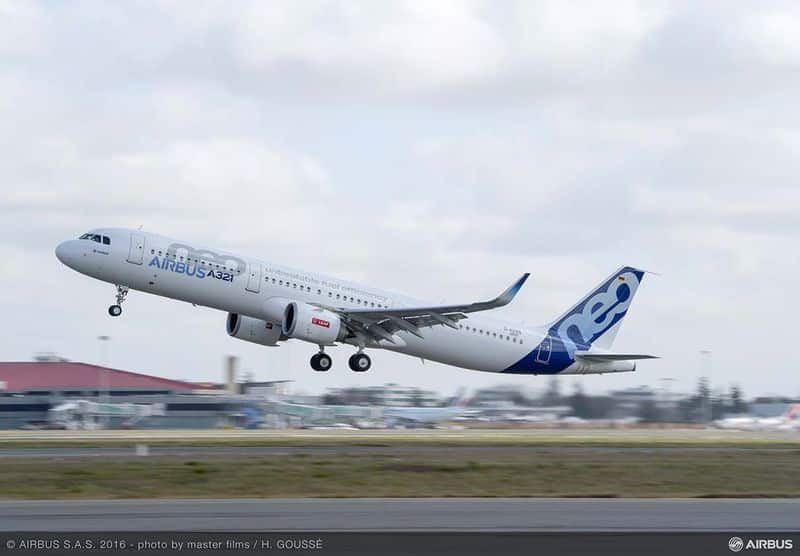Aviation
Airbus to add A321 production capabilities in Toulouse

Airbus to add A321 production capabilities in Toulouse
Part of global production system modernisation
#A321 #A321XLR #WeMakeItFly
Toulouse, 21 January 2020 – Following its strategy to keep its overall production system at the leading edge of technology and to increase industrial capacity and flexibility, Airbus has decided to create new A321 production capabilities at its site in Toulouse.
ANA Announces Delivery Ceremony Date for its First Airbus A380
By mid-2022 the current A380 Lagardèrefacility in Toulouse will accommodate a digitally-enabled A321 line as a step to modernize the A320 production system in Toulouse. The new facilities will provide more flexibility for A321 production, while keeping the overall single aisle industrial capacity in Toulouse flat.
India formalises acquisition of 56 Airbus C295 aircraft
“We are enjoying an unprecedented high demand for our winning A320neo Family and especially its A321 Long Range (LR) and Xtra Long Range (XLR) derivatives,” said Michael Schoellhorn, Airbus Chief Operating Officer. “In order to optimize the industrial flow, we have decided to increase our global A321 production capacity and flexibility as well as to establish a next generation Final Assembly Line in Toulouse.”
Currently, the only European Final Assembly Line to assemble A321s is at Airbus’ Hamburg site. In addition, the A321 is also being assembled and delivered from Mobile, Alabama, USA.
Toulouse was selected for several reasons such as: overall competitiveness, time to market, investment cost, available floor space and resources. The decision has been communicated to Airbus’ social partners.
The A320neo Family is the world’s best-selling single aisle with over 7 100 aircraft sold to over 110 customers. Within this Family, the A321XLR is the latest evolutionary step which responds to market needs for even more range and payload, creating more value for the airlines. From 2023, it will deliver an unprecedented XtraLong Range of up to 4,700nm and a 30% lower fuel burn per seat compared with previous generation competitor aircraft. For passengers, the A321XLR’s new Airspace cabin will provide the best travel experience, while offering seats in all classes with the same high-comfort as on a long-haul wide-body, with the low costs of a single-aisle aircraft.

Aviation
COMAC Unveils Plans for the C929 to Rival Airbus and Boeing

After the success of China’s first C919 aircraft, the country is setting its sights on developing a larger plane. COMAC (Commercial Aircraft Corporation of China) has officially confirmed plans to build a widebody aircraft, marking a significant step in its aircraft lineup.
Traditionally, Airbus and Boeing dominate the widebody aircraft market, with decades of expertise in developing planes and engines capable of carrying heavy payloads. China, which currently relies on imported engines, is now aiming to challenge these giants with its own widebody jet, the C929, designed to compete with the Airbus A350 and Boeing 777.
American Airlines Is Looking for Flight Attendants: Apply Now
The C929 will be China’s first independently developed long-range widebody aircraft. It adheres to international airworthiness standards and boasts independent intellectual property rights. The baseline version is designed to seat 280 passengers and offers a range of 12,000 kilometers, catering to global demand for both regional and international air travel.
Russia, which also needs reliable narrowbody and widebody aircraft, could become a key customer for the C929. Additionally, China plans to target the broader Asian market as it continues to expand its aviation capabilities.
Close Call at Heathrow: BA Flight Narrowly Escapes Drone Collision
China’s aviation progress includes the ARJ21 (now called C909), a regional jet with 100 seats for shorter routes, and the C919, a narrowbody jet with 180 seats designed to rival the Boeing 737 MAX and Airbus A320. Both models have found increasing demand in the domestic market.
At China’s largest air show in Zhuhai, COMAC announced that Air China will be the launch customer for the C929 widebody jet, though details about order size and delivery timelines were not disclosed.
Other major deals announced by COMAC include:
- Hainan Airlines: Firm orders for 60 C919 and 40 C909 regional jets.
- Colorful Guizhou Airlines: 30 C909 jets, with 20 firm orders and 10 provisional agreements.
The C929, renamed from the CR929 after Russia withdrew from the joint development project in 2023, is expected to carry 280–400 passengers with a range of 12,000 kilometers, competing directly with Boeing’s 787 Dreamliner.
According to COMAC’s deputy general manager, Tong Yu, the first fuselage section of the C929 is expected by September 2027, with prototype test flights anticipated soon after.
-

 Aviation2 months ago
Aviation2 months agoMicrosoft Flight Simulator Raises $3 Million to Bring Back the An-225 Mriya
-

 Airlines2 months ago
Airlines2 months agoQantas Engineers Stage Walkout Over Cost of Living Concerns
-

 Airlines2 months ago
Airlines2 months agoQatar Citizens Can Travel to the United States Without a Visa
-

 Aviation2 months ago
Aviation2 months agoQatar Airways bans these new Electronic Devices on plane
-

 Airlines2 months ago
Airlines2 months agoJapan Airlines Rolls Out Free Domestic Flights to International Passengers
-

 Defence2 months ago
Defence2 months agoWhich Country Has the Largest Fleet of Fighter Aircraft?
-

 Airport2 months ago
Airport2 months agoWestern Sydney Airport Welcomes Its First Plane After 6 Years of construction
-

 Travel2 months ago
Travel2 months agoQatar Airways Launches Four Additional Flights from Amsterdam








